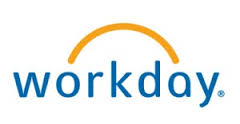Workday: Linking technology design and user experience

Workday is among the most high-profile examples of a new breed of enterprise software, based completely in the cloud. Started by Dave Duffield and Aneel Bhusri, who led PeopleSoft prior to the acquisition by Oracle, Workday is now a public company.

As part of the CxOTalk series of conversations with innovators, we spoke with Workday's Chief Technology Officer, Stan Swete, to distill the essence of Workday and learn about its unique attributes.
During our conversation, simplicity emerged as Swete's theme for characterizing the company. In this context, simplicity means much more than user interface, although that is of course critically important. The company's design and development philosophy finds expression in making the software easy to use, upgrade, and change over time.
This short video summarizes the discussion:
For Workday, simplicity is the common thread that makes the software easy to consume for users while enabling Workday to manage its own system in a reliable and cost effective manner at scale. By defining simplicity in broad terms, Workday views the product as a chain of links, each of which contributes to user satisfaction. That chain includes backend infrastructure and software design to enable users to make software changes and perform non-disruptive upgrades, intuitive user interface, modern mobile apps, and analytics built into the product.
We can hardly overstate the importance of software that users can easily adapt over time to changing business needs. Historically, it was difficult for users to change software rules and functionality in response to conditions such as a merger or new regulations. The software was inflexible, so these changes often required programmers to code customizations so the software could meet specific business requirements.
A recent Gartner report explains the negative long-term impact of these customizations:
By 2016, heavily customized ERP implementations will be routinely referred to as 'legacy ERP'
Early ERP adopters, particularly large enterprises in energy, manufacturing and distribution industries, are paying the penalty of a decade or more of excessive customization. Businesses looking to improve administration today can take advantage of lower costs, better functional fit and process flexibility offered by blending cloud applications with on-premises applications in what we now refer to as 'postmodern ERP.'
Workday's goal of simplicity is a reaction to traditional, on-premise systems that were expensive to implement, customize, and upgrade. To achieve that simplicity, Workday built a cloud application that maintains feature parity with competitors. Swete says, "Workday has to compete against the same features that the other vendors have" because enterprises still require demanding functionality.
Workday' approach has gotten the attention of rivals. Oracle's CEO, Larry Ellison, recently commented on growing competition from cloud-only vendors such as Workday:
"Our competitors are this whole new generation of cloud companies. We’re focused on the infrastructure companies like Amazon and the SaaS companies like Salesforce,” Ellison said.
“We just swapped a bunch of big guys—IBM and SAP—for a bunch of other guys; small but agile,” he said. He also named Workday as a rival, the application service provider started by PeopleSoft cofounder Dave Duffield, but then quickly dismissed its product.
In fairness, Ellison also observed that migrating its extensive portfolio to the cloud presents a larger challenge than building a single cloud application. However, financial analyst, Peter Goldmacher, points out that cloud still only represents only three percent of Oracle's overall revenue; Goldmacher also notes that SAP's cloud revenue is currently less than five percent of sales.
Also read: Enterprise Software: Simplicity Drives Customer Benefit
Eventually, Workday's larger competitors, like SAP and Oracle, will significantly increase their percentage of revenue from cloud applications, but that will take time given their massive installed base of non-cloud customers. While Workday has a head start in being focused solely large-scale cloud applications for the enterprise, these competitors are making headway in transforming themselves into genuine cloud players.
For now, Workday remains a formidable competitor as enterprise buyers make the transition from on-premise to cloud. For this reason, Workday's large competitors are watching the company carefully, despite its smaller size.
Although the short clip embedded above shows a few highlights from our conversation, the full-length video gives a detailed look into Workday's application design philosophy. Coming directly from the company's Chief Technology Officer, it is a rare opportunity to learn about the intersection of technology design and business goals from a cloud leader.
CxOTalk brings together prominent executives, authors, and analysts to discuss innovation in enterprise business and technology. Conducted live and unscripted on open video, CxOTalk offers a rich source of thought leadership from the top practitioners and thinkers in the world. Join co-host, Vala Afshar, and me every Friday for a new episode of CxOTalk.